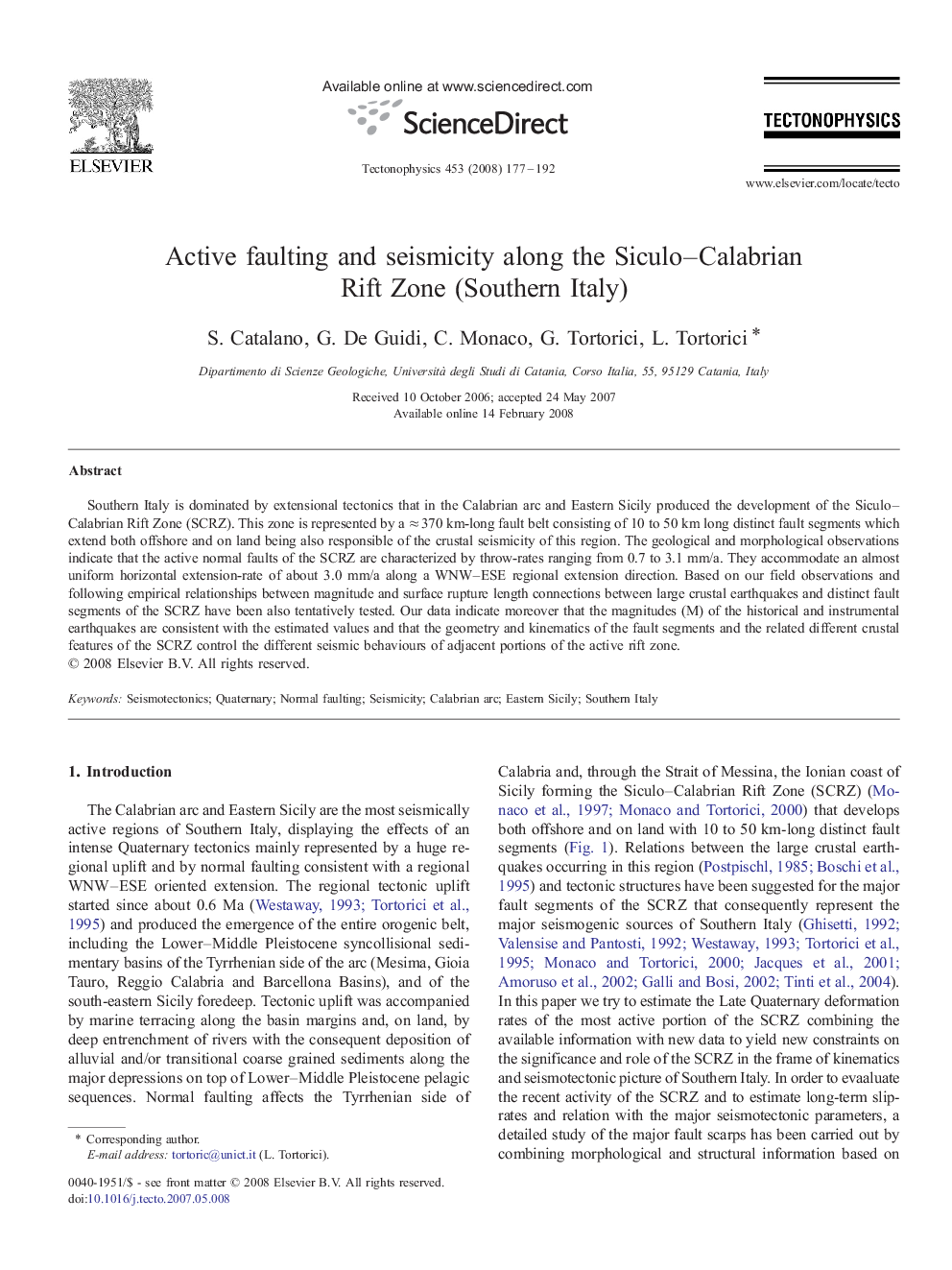| Article ID | Journal | Published Year | Pages | File Type |
|---|---|---|---|---|
| 4694538 | Tectonophysics | 2008 | 16 Pages |
Southern Italy is dominated by extensional tectonics that in the Calabrian arc and Eastern Sicily produced the development of the Siculo–Calabrian Rift Zone (SCRZ). This zone is represented by a ≈ 370 km-long fault belt consisting of 10 to 50 km long distinct fault segments which extend both offshore and on land being also responsible of the crustal seismicity of this region. The geological and morphological observations indicate that the active normal faults of the SCRZ are characterized by throw-rates ranging from 0.7 to 3.1 mm/a. They accommodate an almost uniform horizontal extension-rate of about 3.0 mm/a along a WNW–ESE regional extension direction. Based on our field observations and following empirical relationships between magnitude and surface rupture length connections between large crustal earthquakes and distinct fault segments of the SCRZ have been also tentatively tested. Our data indicate moreover that the magnitudes (M) of the historical and instrumental earthquakes are consistent with the estimated values and that the geometry and kinematics of the fault segments and the related different crustal features of the SCRZ control the different seismic behaviours of adjacent portions of the active rift zone.
